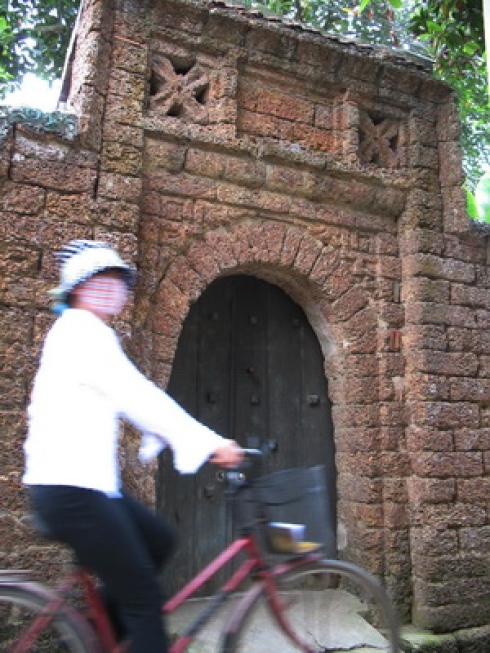VietNamNet Bridge - Ever since the Duong Lam Village was listed as “ancient” and thus subject to preservation, locals have been complaining they cannot renovate houses nor construct tall buildings.

Many told Tuoi Tre they want the village’s “ancient” and “heritage” status to be removed.
They said they did not enjoy any benefits from the status but only met trouble after their village was recognized as a national heritage by the Ministry of Culture and Information five years ago.
Because the village in Son Tay town 60km west of Hanoi is now “ancient”, houses there must also be ancient and a ban has been issued on buildings higher than one storey.
Ha Thi Khanh’s two-floor house recently had its second storey dismantled by local authorities who warn they would demolish other tall houses.
Khanh protested, saying “I live in the rural area. I don’t see anybody asking for an instruction license. Most people just submit an agreement paper to the government”.
She added that she would sue against the demolition.
Khanh’s neighbors are now living in fear the government would dismantle their houses.
According to a regulation issued last month, houses in the village must not be higher than one floor.
Before that, there was no law requiring such demolition and owners of high buildings were only issued a minor warning.
Sloppy village
The village’s century-old relics and historic sites are also suffering from sloppy restoration.
Besides, many locals have sold lands for burial purposes, turning part of the heritage into a cemetery.
Other eyesores include a “WC” plate at Xich Hau, a beautiful ancient architectural work, a “rural eatery” sign at the communal house originally meant for non-commercial public gatherings.
Furthermore, many hang out on their doors such signs as “ancient house” so as to attract tourists although their buildings are officially not ancient while other houses have been turned into rambunctious bars serving international visitors.
Street vendors insistently pester foreign tourists to hawk items and souvenirs, leaving not-so-nice images about Vietnam.
In the early 1990s, some experts warned that the village should apply right policies to preserve and restore ancient houses through thinning out the population to retain its ancient status.
However, preserving ancient houses, roads, century-old trees during the past two decades seems to be forgotten as many people rush to build high-storey houses. Some even engage in land speculation.
The Duong Lam ancient village has a history of about 1,200 years with many houses dating back up to 400 years. It is considered a cultural and architectural space crystallizing century-old civilization in the Vietnamese North.
One special thing is that most of the buildings here are made of laterite and mud, two materials that are abundant in the area. Laterite is used on house walls, gates, wells, temple walls, and so forth while mud is taken from ponds.
Apart from its historical and tourism values, Duong Lam is an important place for scientists to study resident communities in ancient agriculture.
The village gate, banyan, well, communal house are important factors in classifying Duong Lam as a true ancient gem.
Communal houses there are elaborately decorated and considered a quintessence in sculptural arts.
Source: Tuoi Tre